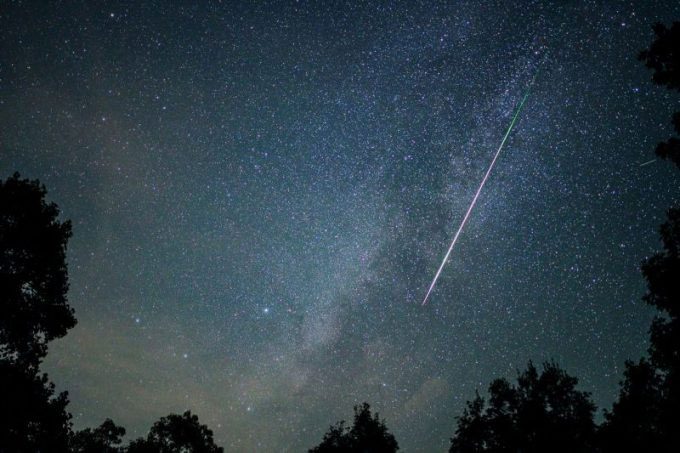Astronomy enthusiasts in Vietnam have the chance to witness the Delta Aquarids meteor shower, which will peak on the night of July 28 and the early morning of July 29.
The Delta Aquarids meteor shower occurs annually from mid-July to mid-August and can be observed worldwide. This phenomenon originates from comet 96P Machholz – a short-period comet that last approached the Sun in 2017.
Mr. Dang Vu Tuan Son, President of the Vietnam Astronomy and Cosmology Association (VACA), stated that the Delta Aquarids is an average meteor shower (with no more than 20 streaks per hour), with the best viewing time occurring when it peaks on the night of July 28 and the early morning of July 29. On surrounding nights, if the weather is clear and with a bit of luck, you may still see some Delta Aquarids meteors streaking across the sky.
Most of the meteor streaks from this event will occur in the vicinity of the constellation Aquarius. In Vietnam, they can be clearly observed in the southern sky around 2 AM.

Meteors in the sky captured in North Carolina on August 11, 2021. (Photo: James Reynolds/earthsky)
With meteor showers, they can be easily observed with the naked eye as they occur continuously over an extended period without the need for any assistance tools. However, Mr. Son emphasized that observation conditions are very important. Viewers should choose a wide viewing angle, with minimal pollution (light and dust), and, importantly, need a clear sky.
“A simple rule for observing meteor showers is to look at the clear night sky for a few minutes to let your eyes adjust to the darkness; counting over 20 stars in the sky will increase your chances of seeing meteors,” he explained.
The central region of this meteor shower lies within the area of the constellation Aquarius (also known as the Water Bearer). He also suggested an easier way to locate this constellation is by referencing the “great square of Pegasus” formed by four bright stars in the Pegasus constellation.

Location of the constellation Aquarius. (Photo: Vietnam Astronomy and Cosmology Association)
Meteor showers occur when debris from a comet remains in clumps that intersect the Earth’s orbit. Each time the Earth passes through this orbital region, part of the comet’s body breaks off and leaves behind a long trail containing many small meteoroids. As our planet travels through this area, the debris (meteoroids) rushes into the Earth’s atmosphere and burns up, creating meteor streaks.
He further informed that in the final days of the Delta Aquarids meteor shower (in early August), the sky may also feature a few meteors from the Perseids meteor shower, a major meteor shower that will peak on the nights of August 12-13.


















































